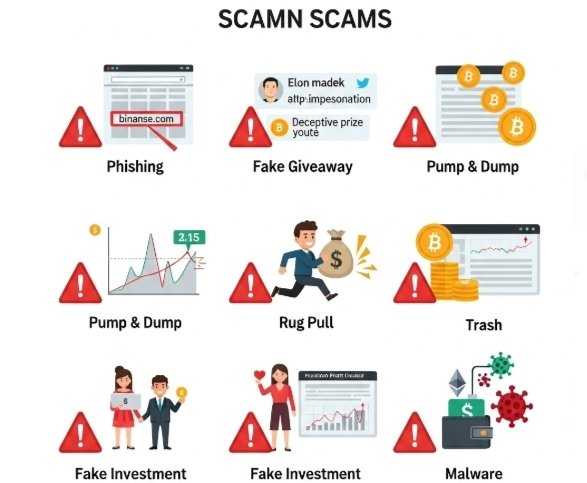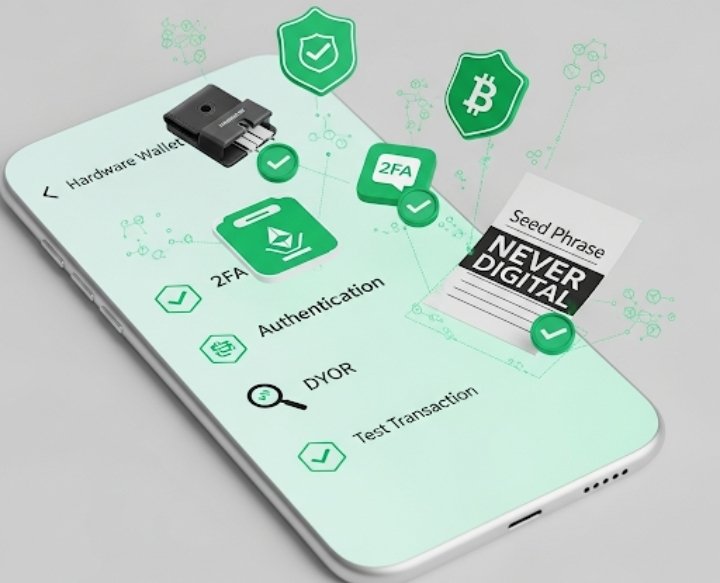The world of cryptocurrency offers unprecedented opportunities for financial innovation and investment. I find this genuinely exciting. Yet, like any burgeoning frontier, it attracts not only innovators and investors but also bad actors seeking to exploit the unwary. For beginners, the decentralized and often unregulated nature of crypto can feel daunting, making them prime targets for sophisticated scams. This article serves as your essential guide to navigating the digital landscape safely. We’ll demystify common cryptocurrency scams and provide actionable, practical advice on how beginners can protect their digital assets from fraud.
The Landscape of Crypto Scams: Why Beginners Are Targets
The allure of quick gains, the complexity of the technology, and the irreversible nature of blockchain transactions make the crypto space ripe for deception. Pretty amazing when you think about it, right? Scammers often prey on the fear of missing out (FOMO), promising unrealistic returns or exclusive access to “next big thing” projects. Makes you wonder, doesn’t it? Many beginners, eager to participate and sometimes lacking technical knowledge, can fall victim to these cunning tactics. Understanding these threats is the first step toward secure crypto practices.
Common Crypto Scams and How They Work
Scammers are constantly evolving their methods, but many schemes follow recognizable patterns. Here are some of the most prevalent cryptocurrency frauds targeting new users:

Scammers are constantly evolving their methods, but many schemes follow recognizable patterns. Here are some of the most prevalent cryptocurrency frauds targeting new users:
Phishing Attacks (Fake Websites & Wallet Drainers):
How they work: Scammers create fake websites, emails, or social media messages that mimic legitimate crypto exchanges, wallet providers, or popular projects. These sites often use subtly misspelled URLs (like “binanse.com” instead of “binance.com”) to trick users into entering login credentials, seed phrases, or private keys. Once entered, funds are immediately drained.
Fake Giveaways & Impersonation Scams:
How they work: You’ll see messages, often on social media, that claim a major exchange or celebrity (like Elon Musk) is giving away free crypto. The catch? You have to send a small amount first to “verify your wallet.” Once you do, the scammer disappears—and you get nothing back.
Pump-and-Dump Schemes:
How they work: A group of fraudsters secretly buys a large amount of a cheap or unknown token, hypes it through social media or influencers, and drives up the price. Once enough people buy in and the price soars, the original group sells off their holdings—causing the price to crash and leaving late investors with losses.
Rug Pulls (DeFi & NFT Scams):
How they work: Prevalent in the Decentralized Finance (DeFi) and Non-Fungible Token (NFT) spaces, rug pulls happen when developers build a seemingly legitimate project, attract users and investors, and then suddenly drain all funds or disappear entirely, leaving holders with worthless tokens or digital assets.
Fake Investment Platforms / Romance Scams:
How they work: Scammers build sophisticated fake investment platforms that look real and show fake profits. They may also lure victims through dating apps or social media, developing trust over time before convincing them to “invest” in crypto schemes. Once you try to withdraw funds, they either vanish or require more payments in the form of “taxes” or “fees.”
Malware & Malicious Software:
How they work: You might unknowingly download malicious software disguised as a wallet, bot, or crypto tool. Once installed, it can steal private keys, passwords, or even monitor your clipboard to change wallet addresses before transactions are completed.
Fake Customer Support / Impersonation:
How they work: Scammers monitor social media for users having issues with exchanges or wallets. Then, posing as customer support, they reach out with fake links or ask for sensitive info like your seed phrase. Real support will never ask for that.
Essential Safeguards: How Beginners Can Protect Their Crypto
Protecting your digital assets requires vigilance and adherence to core security practices. Pretty amazing when you think about it, right? Think of yourself as your own bank.
Prioritize Wallet Security:

Hardware Wallets (Cold Storage): For significant holdings or long-term investments, use a hardware wallet like Ledger or Trezor. These devices keep your private keys offline and protected.
Strong Passwords & Two-Factor Authentication (2FA): Use unique, complex passwords for each account and enable 2FA (preferably app-based like Google Authenticator). Avoid using SMS-based 2FA, which can be bypassed via SIM-swapping.
Safeguard Your Seed Phrase/Recovery Phrase: This is the master key to your funds. Never share it, and store it securely offline—written down and hidden in a safe place. Never save it in a cloud or note app.
“Burner” Wallets: For interacting with new dApps or speculative projects, use separate wallets that hold only a small portion of your funds. This limits risk if one is compromised.
Verify Everything (Trust, But Verify):
Official Sources Only: Always access exchanges, wallets, and project websites by typing the URL directly or using a bookmarked link.
Double-Check URLs: Even when typing, scrutinize the URL for typos or misleading spellings. Look for “https://” and a lock icon.
Be Wary of Unsolicited Contact: Legitimate companies and individuals in crypto will never DM you to offer giveaways, technical help, or investment advice.
Research Projects Thoroughly (DYOR – Do Your Own Research):
Examine Whitepapers and Roadmaps: A legitimate project will have a clearly written whitepaper and defined goals or milestones.
Verify the Team: Look for publicly known and reputable team members. Projects with anonymous developers may carry higher risk.
Check Community Sentiment: Engage with the project’s community on Discord, Reddit, or Telegram. Look for signs of authentic engagement—not just hype.
Liquidity Locks: For DeFi projects, ensure the liquidity pool is locked for a set period. This reduces the likelihood of rug pulls.
Be Skeptical of “Guaranteed Returns”:
The crypto market is inherently volatile, and no legitimate project or person can guarantee profits. If someone promises fixed returns or “can’t lose” investments, it’s almost certainly a scam.
Practice Smart Transaction Habits:
Double-Check Wallet Addresses: Cryptocurrency transactions are irreversible. A single incorrect character can result in permanent loss.
Small Test Transactions: For large transfers, send a small test amount first to confirm everything is working correctly.
Avoid Public Wi-Fi: Public Wi-Fi networks are often unsecured and susceptible to hackers. If necessary, use a trusted VPN.
Keep Software Updated:
Regularly update your crypto wallet applications, browser extensions, mobile apps, and computer operating system. Updates often include security patches for known vulnerabilities.
What To Do If You’ve Been Scammed
If you suspect you’ve been a victim of a crypto scam, act immediately:
Stop All Communication: Cease all contact with the scammers. Do not respond to further messages.
Gather Evidence: Collect all relevant information, including wallet addresses, transaction IDs, emails, DMs, links, and screenshots.
Report to Authorities: In the United States, file a report with the FBI’s Internet Crime Complaint Center (IC3.gov), the Federal Trade Commission (FTC.gov), and your local law enforcement. If the scam involved a specific platform or exchange, report the incident to them as well.
Beware of Recovery Scams: After being scammed, you might be targeted again by “recovery” services that promise to retrieve your lost funds—for a fee. These are almost always additional scams.

Conclusion
Staying safe in the cryptocurrency space is primarily about education, vigilance, and personal responsibility. While the allure of quick gains can be strong, the best defense against scams is a healthy dose of skepticism and a commitment to rigorous security practices. By understanding how these scams work and implementing the safeguards outlined here, beginners can explore the world of crypto more safely and confidently.

















































I appreciate how this post outlines not just the types of scams, but also why beginners are especially vulnerable. Understanding the psychology behind scams—like how FOMO is used to manipulate people—is just as important as spotting the technical red flags.